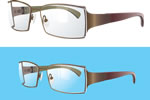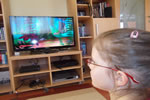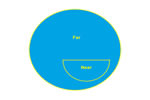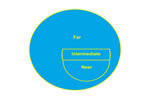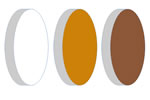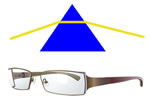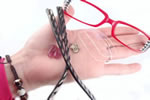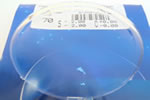Eyeglass Lens Materials
According to Your Daily Activities
There are many eyeglass lens materials to choose from: glass, plastic, polycarbonate, trivex but when decide you must keep in mind what fits your daily activities and lenses will last more.
Helpful Tips
Pick out the lens material only after you get the prescription from an optometrist or ophthalmologist.
Here are some activities and the right lens materials, when you practice these:
Glass lenses
Activities
I recommend glass for those who often work in an environment with excessive heat, flames or sparks, or a dusty environment and any other activity where exist risks of scratching the lens.
It is the oldest material for lenses, less used now because of new stuffs and emerging technologies.
Advantages
- High resistance to scratching, therefore, does not require hardening layer
- Outstanding optical quality for clear vision
- Affordable price
Disadvantages
- Glass is the heaviest material used in the manufacture of lenses so eyeglasses with glass lenses will be the heaviest. If you have a larger frame type, will leave marks on the nose due to pressure
- Thickness of the glass lenses: if you have large diopters lenses will be thicker
- Glass breaks easily: if you ride eyeglasses on the floor, you have a chance to run out of lenses
- Because glass is breakable, it does not allow processing like drilling or ditch cutting in the edge for rimless or semi-rimless eyeglasses
Plastic lenses
Activities
The most used material in the manufacture of lenses is plastic, and it is suitable for most activities.
Advantages
- Clear view, like with glass lenses
- Plastic is lighter and more resistant to breaking than glass
- Allows specific processing such as ditch for wire (semi-rimless eyeglasses) or screw holes (rimless eyeglasses)
- Low cost
Disadvantages
- It scratches easier than glass, but this can be offset by applying hardening layers
- Thickness is comparable to that of glass, so plastic is for smaller diopters
Polycarbonate lenses
Activities
An advanced material used mainly in sport activities for sports goggles, also suitable for kids eyeglasses and safety glasses due to resistance, but in any normal daily activities.
Advantages
- Polycarbonate is more resistant to shattering than plastic, hard to crack
- It is much thinner and lighter than plastic
- Allows processing like drilling
- Offers 100% UV protection
Disadvantages
- Polycarbonate scratches easily and require hardening coating
- Optically, it is worse than glass and plastic, due to chromatic aberration for sensitive people
- Higher price
Trivex lenses
Trivex is another new material in the manufacture of lenses. It is a material with similar features to those of polycarbonate.
See what is best in comparison trivex lenses vs. polycarbonate eyeglass lenses.
When you choose your lenses, besides the eyeglass lens materials according to performed activities, you need to take into account other things as frame size, lens shape: convex or concave, the diopters prescribed and so.
In this case, the optician can be extremely useful, so ask his opinion.
Quick Links - Eyeglass Lenses
Home » Eyeglass Lenses » Eyeglass Lens Materials
Was this information useful?
1. Like Perfect-Eyeglasses-Guide.com on Facebook.
2. Share this article with your friends:

